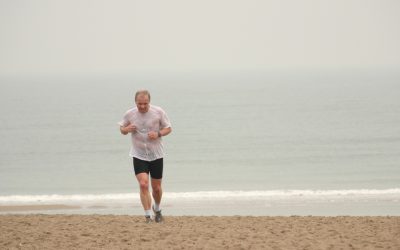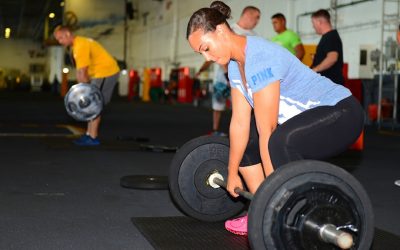Aerobics
Aerobics
Rev up your Workout with Interval Training
Frank's Comments: I coach all my client to use High Intensity Interval Training (HIIT) on days between weight training workouts. I especially like interval sprints on an Elliptical machine, because one can push and pull on the hand levers while pushing the legs into a...
Top Strategies for Extending Health and Fitness into Old-age
Let's do a roundup of the top strategies for extending health and fitness into advanced age; it is a good thing to review what we know works on a periodic basis. Here are two numbered lists of the DON'Ts and DOs to help the average human to a long and healthy life. I...
Cardio Training – A Crucial Aspect of Fitness
The term fitness encompasses a wide range of subjects. Diet, exercise, lifestyle and way of thinking. One of the most important facets of fitness is cardio training. Cardio or aerobic training means air. Any exercise that causes us to use greater amounts of oxygen,...
Women, Fitness and Weight Training
Women, Fitness and Weight Training As an observer of the aging process, I have noticed that women seem to take it differently than men. Particularly, men seem more attentive to their bodies, while women (big generality here) seem to attend more to their faces. I note...
The idea behind aerobics is that elevating our heartbeat rate and respiratory demands for a protracted period will improve heart-lung function, giving us the ability to exercise for longer periods, improving our endurance. Implied in this is that our vascular system will be kept free of atherosclerotic plaque and heart disease will be avoided. This proves not to be the case. Our ability to do sustained output for running and swimming will, however, improve. Lung efficiency – our ability to get oxygen in and CO2 out of our blood stream – greatly improves over someone of the same age who is sedentary.
But consider the difference in body morphology between a distance runner and a sprinter. Sprinters will usually be highly muscled, while a long distance runner will shed every bit of muscle not required to carry the body over the required distance, often looking like someone who has been starved. Recent studies show that sprinter’s lung capacity grows over a career, while the distance runner’s will decrease. The same occurs with heart strength, the heart being a muscle after all. The well known authority on this is Dr Al Sears, MD, and he has some very convincing data that longevity favors the sprinter over the distance runner. I have a special category for Dr Sears information on the website.
From a physical standpoint, the distance runner speeds up muscle loss as naturally occurs in the aging process. DNA analysis also shows that the prolonged stress of distance running shortens telomere length faster than sprinters, so in an absolute sense, aging is more rapid with distance running as a life-long health strategy.
Sprinters train by pushing deeper and deeper into their anaerobic limits, and oddly enough, this causes their aerobic capacity (in terms of lung capacity and gas exchange efficiency) to improve over a distance runner. Pushing past aerobic limits on a repetitive basis, with lowered output during a recovery period in between is more effective at improving heart-lung power and efficiency than sustained output at a constant pace for prolonged periods. A balance between aerobic and anaerobic exercise is the best strategy to achieve overall fitness for optimal aging.
While jogging or other aerobic exercise is a vast improvement over a sedentary lifestyle, a more optimal result can be achieved by using the Interval Training approach. The time required to get optimal results from an exercise routine can be shortened to less than 15 minutes per session. My approach to this is to perform my weight training such that my lighter sets are done to pulmonary limits; I do endurance-style sets well past my aerobic limits back-to-back like sprint training. Then I finish with a low-rep high-load set to coax my muscle to grow, and move on to the next exercise.
Running produces what is called runner’s high; a bust of opiate-like endorphins that impart a sense of well-being. I can testify that the same thing happens when I do a strong workout – yes I am hammered, but I feel incredibly strong as a person, and I virtually never feel anything even close to depression.
Both weight training and endurance training are capable of creating chronic joint injury, and it is often a consequence of simply doing too much, too often, without adequate recovery time. It also results from competitive situations, where the spirit of competition overrides common sense. We have to put joint health ahead of competing in terms of long-term priority – if the joints are becoming painful, the overriding concern must become care and repair of the joints. Check out our Joint Health Category for strategies that work to keep them healthy.



